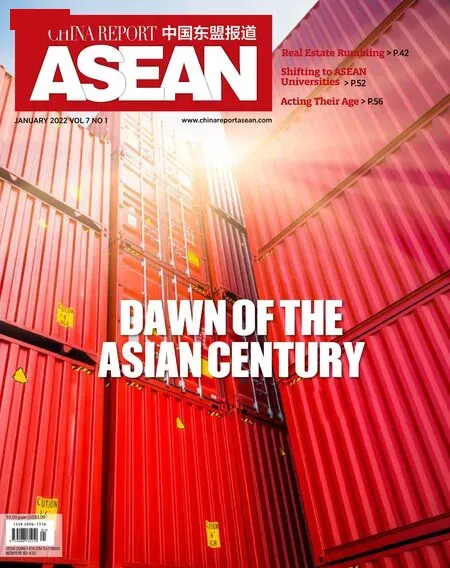SHAPING THE FUTURE

Container terminal at the Yangshan Deep Water Port in Shanghai.(VCG)
On the first day of 2022, the Regional Comprehensive Economic Partnership (RCEP), signed between the 10 ASEAN members and five regional partners, Australia, China, Japan, New Zealand and South Korea, officially took effect in the 10 signatory countries that have ratified the trade pact.
RCEP provides new trading opportunities through tariff reduction, unified rules of origin, and measures designed to reduce trade and investment barriers.RCEP signatories will eliminate more than 90 percent of import tariffs over the next 20 years.RCEP companies will be able to manufacture and sell goods duty-free throughout the region with just a single certificate of origin once tariff cuts are fully phased in.In terms of investment, all 15 member countries are adopting a “negative list” approach to make firm commitments to market openness.At least 65 percent of all service sectors will be fully open to foreign investors.Restrictions on digital trade will be reduced.IP trade will be streamlined and free flow of innovative technologies will be facilitated.
The world’s largest free trade agreement, covering 30 percent of the world’s total population and trade, is expected to serve as a regional integration catalyst and an institutional mechanism that quickly becomes essential to economic and trade cooperation,sustained development, and regional prosperity as it accelerates Asia’s pace of regaining economic leadership.RCEP may herald the dawn of the Asian Century.
- China Report Asean的其它文章
- RCEP: A Foothold For Southeast Asian Enterprises to Reach the World Stage
- CHINESE ECONOMIC PROSPECTS IN 2022
- SoMETHING oLD,SoMETHING NEW
- RIDING THE WAVE oF GLoBALIZATIoN China marks 20th anniversary of joining WTO
- REAL ESTATE RUMBLING
- China’s Science Fiction Industry Sets Off on Its Next Voyage

